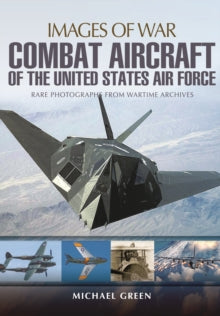Images of War: Combat Aircraft of the United States Air Force
Usually shipped within 24 hours
UK deliveries from £4.95
Delivery & Returns
Delivery & Returns
We use the Royal Mail, DHL Express or UPS for our customers. For UK addresses, deliveries under 10kg are a standard £4.95 via Royal Mail Tracked 48 Service. For orders over 10kg and overseas customers, postage is calculated for you at checkout once you have entered your postal address. This price, does not include any potential custom charges that may apply, depending on the product or destination, as every country has very different import duties / taxes. Online exclusive products (such as trainers) will be delivered to you directly from the printer, separate from other items in your order, but your postage fee covers ALL items in your order.
If you are unhappy with your purchase, please email shop@tankmuseum.org within fourteen (14) working days of receiving your goods, and return it to us at the address below, in its original condition, unopened (with any seals and shrink-wrap intact) and we will issue you a full refund or replace it. Goods must be returned at your own cost. If the item is faulty, you do not need to return it, we will send you a replacement free of charge.
Description
Description
By Michael Green
Paperback
From its humble beginning in August 1907, when the U.S. Army Signal Corps created its Aeronautical Division assigned: "to take charge of all matters pertaining to military ballooning, air machines, and all kindred matters." That small inconsequence portion of the U.S. Army would grow progressively over the many decades to become its own separate entity following the Second World War, named the U.S.
Air Force in 1947. It became overnight the world's most powerful military establishment, able to deliver conventional and nuclear ordnance anywhere around the globe. Today's cutting-edge example of that is best represented by the supersonic, bat-winged B-2 Spirit stealth bomber, which can fly at an altitude of 50,000 feet, and is built of carbon-graphite composite materials.
The B-2 Spirit is a far cry from the early days of the service when it relied on fragile prop-driven, wood and fabric-covered aerial platforms, such as the Wright Type B, which could barely reach an altitude of 100 feet. As this superb illustrated and well informed book vividly demonstrates, in between have been such iconic aircraft as the P-51 Mustang and P-47 Thunderbolt fighters and bombers such as the B-25 Mitchell, B-17 Flying Fortress and B-29 Super Fortress which dropped the first A-Bomb in 1945. The Cold War demanded ever more powerful aircraft, such as the B-58 Hustler and B-52 Stratofortress and fighters including the F-86 Sabre, F-104 Starfighter and F-4 Phantom.








